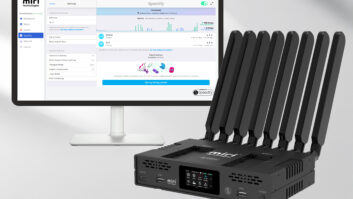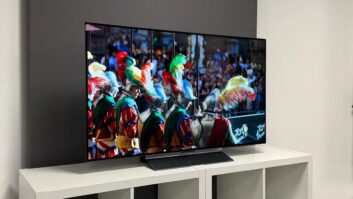When WebTV popped onto the retail landscape three years ago it was hailed as the poor man’s device for gaining Internet access, but the feeble sales that followed the introduction quickly relegated WebTV and the Internet appliance market to obscurity.
That was until this year, when the big-name PC vendors, several dedicated Internet appliance firms, and Micro-soft’s WebTV all began pursuing the category with renewed vigor.
This resurgence is directly due to the elimination of the technical problems that thwarted sales of WebTV, namely slow Internet access speeds and the poor resolution television provides when used with the web.
Compaq’s consumer marketing VP Leslie Adams said the increasing availability of broadband Internet access and the development of application-specific appliances should cure these ills.
Compaq expects to have an Internet appliance of some type on the market during the first half of 2000, Adams said, but she felt the category will take off next year.
These new net appliances will take on several forms. There will be stand-alone devices with integrated screens; appliances for accessing the entire web or for linking with specific Internet data, such as stocks; and versions for use with televisions that will have advanced TiVo-type features. E-mail-only appliances from companies such as VTech have already been introduced.
Hewlett-Packard has formed a new division to handle its appliance development, and IBM and eMachines have expressed interest in these devices.
Stephen Baker, director of hardware analysis at PC Data, Reston, Va., said, “It seems these things will take a little while to build momentum, but it is possible they could be big in the fourth quarter.”
Compaq’s strategy will include developing dual-platform devices. This means a product aimed to customers who just want Internet access might use Windows, but devices created to handle just stock transactions might use a different OS.
IBM, which now only sells consumer products directly from its online store, announced its entry into the market in February. The company will approach the market through both its web store and through OEM arrangements in which it will build stand-alone devices for accessing specific sites.
The OEM deals will include building appliances that can be given away by companies to build an installed base of customers with access to their website.
Fidelity Investments has already signed up with IBM to have such a product built. The IBM appliance has broadband access, and the design can be customized to meet the vendor’s need, the company said in a written release.
Beside the technical limitations WebTV suffered when compared to even an entry-level PC, customers also ignored the product because PC prices had dropped to very affordable levels.
The advent of broadband-ready appliances will narrow the technology gap, but the possibility that the appliances might be given away does not signal the end of the home computer, Adams said — although it might slow the growth of multi-PC homes.
However, PC Data’s Baker said PC pricing could continue to be a thorn in the side of net appliances. It might be hard for a consumer to choose a $299 net appliance over a $399 fully equipped PC, he said, noting that another strike against the device is consumers could be required to pay for an additional ISP or e-mail service.
Van Baker, VP of Consumer Platform Research for Dataquest’s e-Business Group, picked up this point and added that the problem he sees is with the audience being targeted by the net appliance companies.
“These devices target non-Internet households that don’t have a PC,” Baker said, “as the devices include a mandatory subscription to what is typically a captive ISP and portal. Early adopters already have PCs and Internet access, and an ISP and a favorite portal. Why would they want another ISP as part of the device purchase?”
Compaq’s Adams said the appliance’s price has to be less than what a PC costs. With ISP rebates frequently bringing a computer’s price down to zero, this could mean the net appliance will have to be given away.
Another possible hurdle to attracting Internet-less consumers is that they probably do not want to be on the web, Dataquest’s Baker said.
But Adams said that even with that negative scenario, a net appliance could solve more problems then it creates. “The appliance solves the problem that arises when several family members want to access the web at once,” she said, adding that the PC’s role will evolve into the home’s multifunctional device, while the appliance handles web access.










